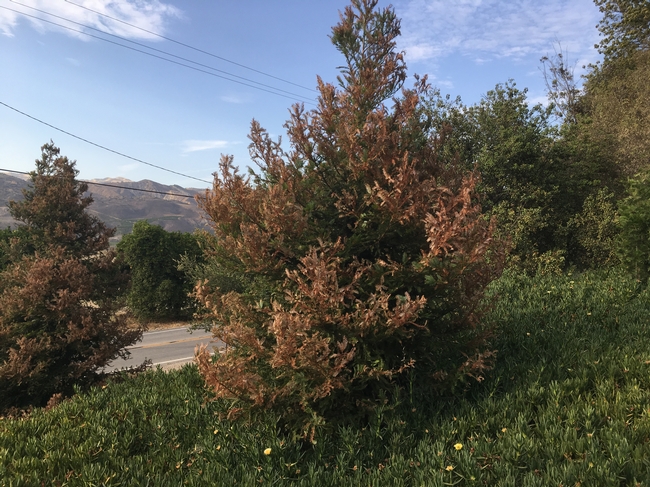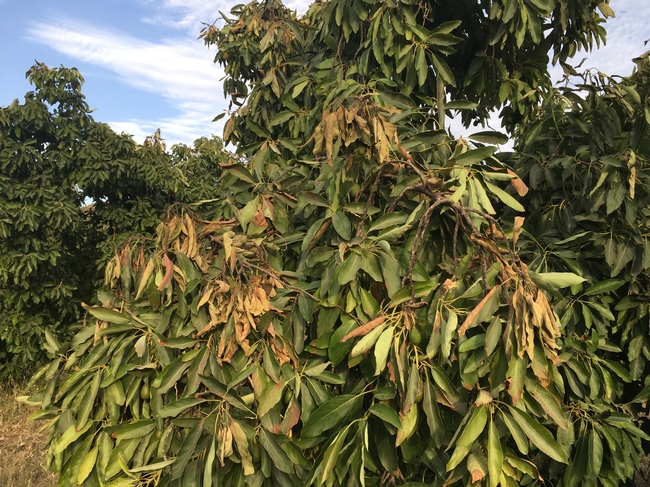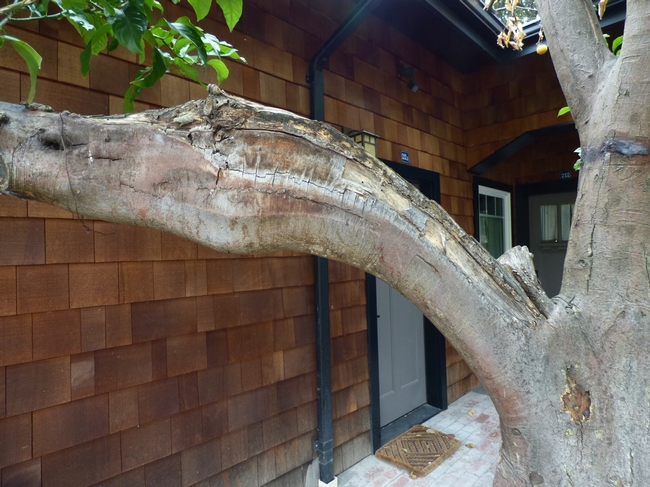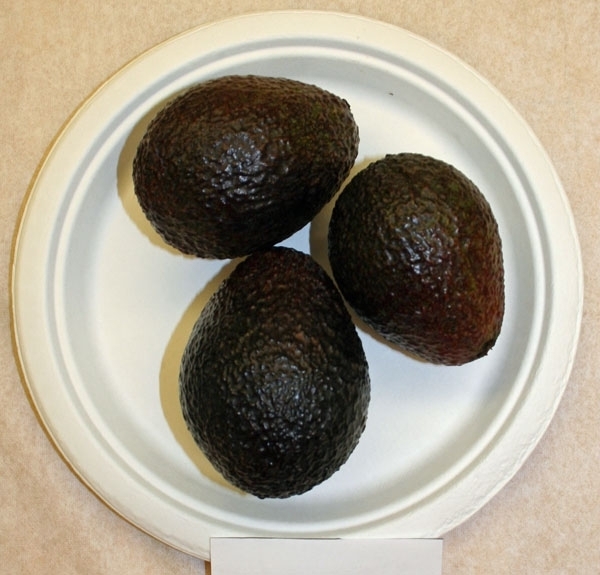
Posts Tagged: heat damage
Frost Damage in July?
So, this weekend we had some hot weather and the damage from that heat is apparent in all kinds of plants. Sycamores, cottonwoods and willow in the Santa Clara River bottom look torched. Redwoods in the landscape look like a new disease has hit them.
Even old coast live oak in Ojai have been toasted. Orchards have been hit also with been hit without exception. This has been a widespread weather phenomenon like a major freeze. And the trees should be treated as if they have been freeze damaged.
//ucanr.edu/blogs/blogcore/postdetail.cfm?postnum=12275
So, what to do with the avocados and citrus that have been hit? Well, if it's just a slight toasting, nothing. They will grow out of it. It's a setback. The growing points, the terminal buds, have been damaged and in the case of avocados those may not flower next spring. If the damage is not extensive, the whole canopy has not been damaged, then flowering should be sufficient for a good crop next year. If the whole canopy has been hit, it's likely that flowering will be minimal next year.
If the trees have lost significant portions of the canopy, though, the heat damage is not the problem, it's the sunburn damage that is going to happen that is the problem. It's the loss of the leaves that transpire and cool the tree that lead to this kind of damage that can kill small trees and lead to significant branch loss in older trees.
The leaves act like the radiator in a car. They move water through the tree and that water movement carries off the heat that accumulates in the branches and stems. When water flow stops, the bark heats up and tissue is damaged. The worst-case scenario occurs when a “renovated” tree that has been brought down to 6 feet in January and since then there has been new growth all over the tree. The heat fries that new growth and now the whole tree structure is exposed to sunburn damage.
The branches exposed to the sun need to be protected with whitewash. The whitewash needs to be WHITE, not grey. It needs to be able to reflect the sun and prevent the surface from heating. The tops of branches and the west and south sides need to be the most protected, so it often involved hand work. And it needs to be done soon after the canopy loss. That wood heats up fast and damage occurs soon after it heats up.
So what else needs to be done? No canopy, no water loss, so it's necessary to manage the water differently. With no leaves, there is no water moving from soil through the tree, so it just sits there, and the ground stays wet. Perfect conditions for root rot.
Growers who were watering their trees knowing that a heat spell was coming, did the right thing. It probably reduced the severity of the damage, but even growers who had water on before the heat and it was running during the heat have had damage. With canopy damage and loss, applied water needs to be restricted to just enough to get tree recovery without creating a wet, soggy condition. And with tree recovery, it's going to need a continually changing irrigation schedule as new growth occurs.
So now more than ever, water to the tree's growing needs. And the normal fertilizer program needs to be adjusted. There's probably sufficient nutrients in the soil from prior fertilization that nothing new needs to be applied.
And don't' prune the trees. Leave the hanging leaves there. They will help protect the tree from sunburn, but the extent of the damage is not clear. Let the tree push new growth and that will tell you sometime in the future 3-6 months, even a year from this event, when to do significant pruning.
Phlood, Phyre, Phrost, Fytophthora and Phahrenheit continue to plague our industry. It seems like we are always coping with some natural and some unnatural issues affecting agriculture. Oh, yeah and pH.
Photo: Heat singed new avocado growth.
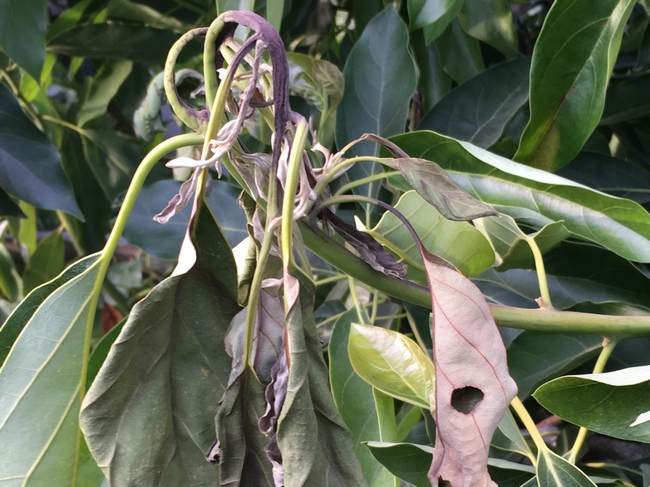
heat damage to new avocado
New Avocados for the Valley?
California avocados are the best in the world. So says downtown restaurant manager Daniel Avalos in a Valley Public Radio story by reporter Ezra David Romero.
The fact that they currently thrive only on a small swath of coastal Southern California is being challenged by UC Cooperative Extension specialist Mary Lu Arpaia. She is on a mission to find avocado varieties that withstand the hot summers and cold winters of the San Joaquin Valley, where irrigation water and crop land are more abundant and cheaper.
She hopes to find avocado varieties that ripen at various times of year, and varieties that might be an alternative crop for citrus growers should huanglongbing, a disease that has devastated the Florida citrus crop, take hold in Central California.
"There's a void of California fruit on the market in the months of November, December and actually early January," Arpaia said. "So if we can find different selections that maybe are unique that fit into that window, then we help the entire California avocado industry."
An as-yet unnamed avocado variety.
Romero visited the UC Lindcove Research and Extension Center to see the trees in Arpaia's study. Currently, the vast majority of California avocados are the Hass variety. The goal is to breed varieties with similar eating quality that grow to a moderate height and have high yield. One potential that is already being produced by nurseries is called "gem."
"This is gem," said Eric Focht, a staff research associate in Arpaia's lab. "You can see it's a little more oval or egg shaped than Hass. It has the speckling on the skin. Now as this ripens, it will turn dark and a lot of times the speckled lenticels with get a yellow kind of golden color it it."
Another promising variety is called "lunchbox" because of its small size. According to Focht, it "just falls out of the skin." Arpaia said, "It makes wonderful guacamole and I found, with a non-replicated test in my refrigerator, the fruit doesn't brown."
Arpaia's favorite guacamole recipe is featured at the end of the story on the KVPR website. And there is more on this story at:
Mary Lu Arpaia
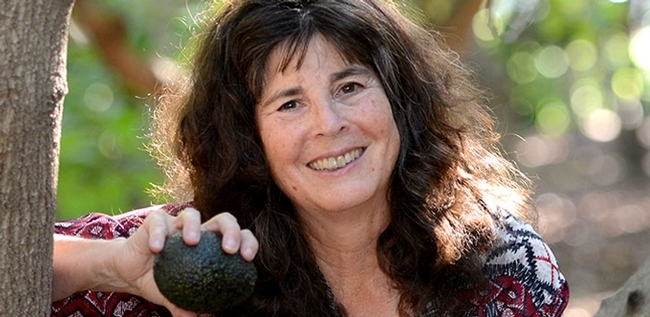
Mary Lu
Avocado Heat Advisory
Avocado Heat Advisory Temperatures are forecast to be in the triple digit range throughout much of the southern California avocado growing region beginning Sunday June 19 and extending into Tuesday June 21. The National Weather Service (NWS) is predicting maximum temperatures between 100 and 110 degrees with similar heat index readings away from the immediate coast for Ventura and Los Angeles Counties. In Riverside, San Diego and Orange Counties, NWS predictions are for 95 to 105 degrees in the valleys, and 105 to 113 degrees in the inland empire and high desert.
To ensure that California avocados maintain their superior quality it is imperative that growers manage their trees and harvest their fruit according to the best management practices as outlined below.
IRRIGATION Growers should be irrigating their trees now, in advance of the heat, to ensure that their trees are fully hydrated. An additional 50% of the budgeted amount of water is recommended to be applied the day before a heat wave. For extended heat waves, daily pulses of irrigation are recommended to maintain the trees' water status. A well-watered tree will tolerate the stress of a heat wave much better than a tree that is suffering from water stress. Signs of heat damage to trees include fruit drop, shoot damage, leaf burn and in severe cases leaf drop.
HARVESTING Every attempt should be made to harvest fruit when temperatures are below 90 °F, and no harvesting should take place when temperatures exceed 95 °F. Temperature in the shade should be monitored during harvesting and, when possible, harvesting crews should be moved to the coolest, least exposed areas of the grove.
Field bins should be placed under the trees while being filled to protect the harvested fruit from sunburn. Once filled, bins should be moved to a shade structure (open-sided roofed building), or covered with bin covers or light-colored tarps if they cannot be immediately transported to the packinghouse. Never leave filled bins exposed to the direct sun. The surface layer of fruit can easily heat up to more than 15 °F above ambient temperature when exposed to direct sun. Acute sunburn will only show on fruit after it is packed and is a major quality detractor.
To avoid water loss and decreased fruit quality do not hold fruit too long after harvest. Transport fruit to the packinghouse at least once per day, if not twice daily. Bins should not be left in the grove for more than 8 hours after harvest. Cover bins during transport to avoid sunburn and to reduce water loss.
Photos: Leaf sunburn, fruit sunburn

avocado leaf sunburn

avocado fruit sunburn

